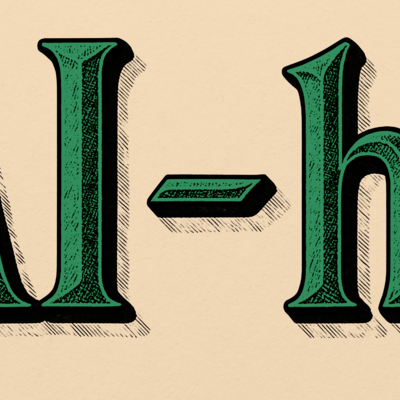.11.33_PM.png)
Was this newsletter forwarded to you? Sign up to get it in your inbox.
Last week, after an anxious hour of writer’s block, a well-meaning friend suggested that I “just take a walk.” I nodded politely, but inside I wanted to scream.
Finding creative inspiration has always mattered, but lately, it feels more important than ever. As AI takes on routine, repetitive tasks, what stands out isn’t execution—it’s originality. Waiting (or walking) around for new ideas to materialize felt arbitrary to me, so I scoured the internet looking for a more structured approach to creativity. What I found changed how I approach creative thinking.
After reading a few papers about whether LLMs can be creative, I discovered the work of Margaret Boden, a cognitive scientist who broke creativity down into specific mental processes in the 1990s. Boden is intriguing because she treats the mind—even its most imaginative abilities—as an information-processing system that follows rules, much like a computer program, rather than something mysterious and unpredictable. Her study of creativity is grounded in a practical, systematic understanding of how ideas form, far more reassuring than my sixth stroll (read: frenetic walk) around the block.
Boden’s structured view of creativity helped me see the fears about LLMs ending human creativity in a new light. Her framework allowed me to understand my own creative process—something I’d long treated as a flighty, fragile feeling—as a system I could work with. This shift brought with it a sense of security, and the realization that AI isn’t a creative competitor—it’s an ally. I found ways to use LLMs to train creativity like a muscle, something I could strengthen with practice, not just desperately hope would show up.
Applying Boden’s theory to LLMs has reshaped the way I think creatively—it might do the same for you. Let’s dive in.
What is creativity, really?
Too many artists, scientists, and writers talk about their creative process as a blackbox—an ephemeral spark that’s difficult to explain and impossible to predict. But it’s not. Boden is one of the most influential cognitive scientists to think about creativity through a computational lens. Her work is rooted in the study of early AI attempts to recreate human creativity, like computer programs that could draw, tell jokes, or compose music.
In her 2003 book The Creative Mind, Boden described creativity as the ability to come up with ideas that are new, surprising, and valuable. She also classified creativity, dividing it into three types—combinatorial, exploratory, and transformational.
Combinatorial creativity: Great ideas come from unexpected but meaningful connections
This type of creativity is about creating unfamiliar combinations of familiar ideas, with the added requirement that there’s a clear conceptual link between the ideas. The resulting combination has to “make sense.”
A classic example is the literary device of analogy. Boden uses Macbeth’s description of sleep as something that "knits up the ravelled sleeve of care," noting that William Shakespeare’s analogy works because there’s an intelligible link between the ideas: Just as knitting repairs a frayed sleeve, sleep heals a restless mind.
A more recent example of combinatorial creativity are the viral memes that compare Mark Zuckerberg to a lizard, like this one:
Source: Facebook.
The Only Subscription
You Need to
Stay at the
Edge of AI
The essential toolkit for those shaping the future
"This might be the best value you
can get from an AI subscription."
- Jay S.
Join 100,000+ leaders, builders, and innovators

Email address
Already have an account? Sign in
What is included in a subscription?
Daily insights from AI pioneers + early access to powerful AI tools










Comments
Don't have an account? Sign up!
Rhea, your piece on creativity caught my attention, especially your references to Margaret Boden, who captured creativity in the Practical Realm. I'd read her work years ago, so this was a great reminder. Thank you. I don't know how you'd translate my work on the Inner Teen and Radical Creativity to your audience, but I thought you might enjoy a very different take on the creative process. My Substack is a sequel of posts, like a book, so I encourage people to start here: https://arianegoodwin.substack.com/s/first-time-reader That said, you are welcome to browse A Slice of Orange, A Pinch of Sky: https://arianegoodwin.substack.com
@agoodwin222 Thank you so much for reading, Ariane!! I loved getting a chance to check out your Substack -- your "promise" to readers has got me curious, and I’m excited to go deeper. Side note: love the name you've picked :)
@rhea_5618 @rhea_5618
OMG, Rhea, I JUST emailed Every for permission to post your latest email (What the Em Dash Says About AI-assisted Writing—And Us. ) on my blog for visual artists (Art Career Reflections https://arianegoodwin.com).
If I have your permission, what format would you like me to use so people can subscribe to you if they want?
I'm completely besotted with the clarity and intelligence of your work... besotted!
Didn't know about Margaret Boden and her great work. What a nice way to put it into the modern day in a practical way. It's a great illustration of the often touted 'people that use AI well will replace you, not AI itself'. It's how we use AI this article illustrates the point so beautifully deeply connected with the human, augmenting us.
@jpforr Appreciate you for reading :) I agree with you. I'm going to keep writing about the patterns I see in how we use AI + how our relationship with the technology will evolve over time, hope you follow along!!